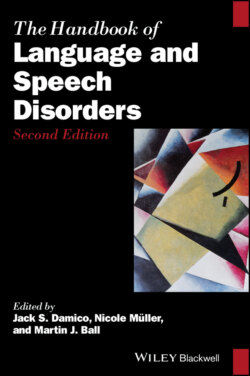Читать книгу The Handbook of Language and Speech Disorders - Группа авторов - Страница 67
4.7 Summary
ОглавлениеSpeech intelligibility is a fundamental feature of spoken communication, involving the production of an acoustic signal by a speaker and the decoding of that signal by a listener. Intelligibility impairment is an issue across the lifespan, for a range of clinical populations that frequent the speech‐language pathologist’s caseload. For children, an understanding of developmental trajectories and the range of typical variability by age is critical for identifying those who have delays and disorders. As such, measurement of intelligibility is of essential import. However, as summarized in this chapter, such measurement is by no means a straightforward task. This is largely because intelligibility is not a unitary construct. It involves contributions from both the speaker and the listener, as well as the surrounding communicative environment. Additionally, while surprisingly understudied in the field of communication disorders, meaningful contributions to the construct of intelligibility likely arise from the dynamic, coordinative nature of spoken dialog, where production and perception are intricately and interdependently connected. Finally, to further complicate the measurement dilemma, these speaker, listener, and contextual contributions likely interact with one another in unique and variable ways. Thus, any measure of intelligibility must be viewed as an estimate, accounting for the speaker, listener, and context within which it was produced. While the task of an ecologically valid approach to capturing intelligibility is challenging, considerable progress has been made in the systematic study of large‐scale samples of both speakers and listeners for characterizing the many variables that contribute to intelligibility.
